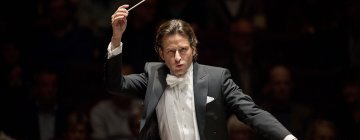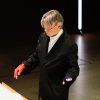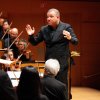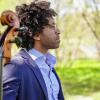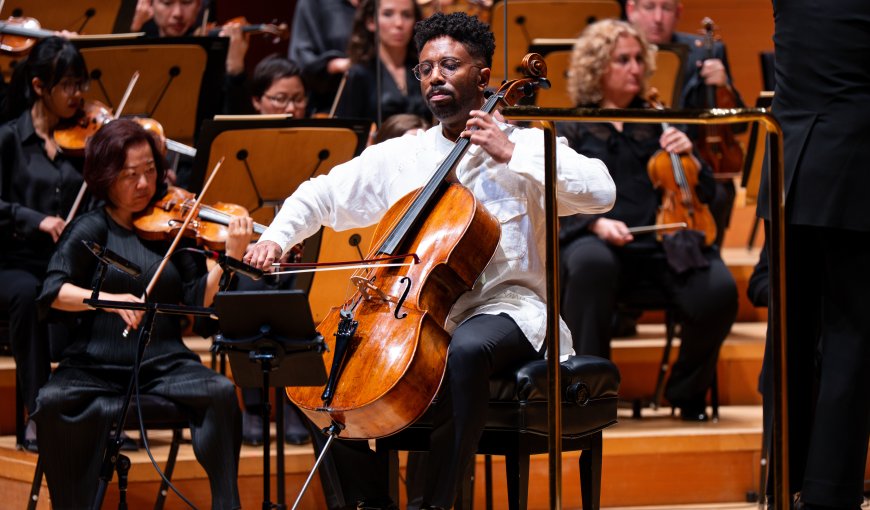
If the pleasantly eclectic program presented by the Los Angeles Philharmonic at Walt Disney Concert Hall on Friday, May 16, had an overarching concept, it was the process of becoming.
The evening’s main offering, the world premiere of Julia Adolphe’s rhapsodic Chrysalis for cello and orchestra, traces the “dramatic physical transformation” of a butterfly emerging from its cocoon “to the cusp of a new beginning” (the composer’s words). At the end of the concert came Maurice Ravel’s crowd-pleasing Boléro, which follows a different sort of transformation: from the flute’s hushed, seductive theme, accompanied by delicate guitar-like pizzicato, to the riotous finale of brass blaring and percussion clanging and banging.
Before and in between came three other pieces with Spanish connections. Tres danzas españolas by Enrique Granados (orchestrated from the superb piano version by Joan Lamote de Grignon) served as an enchanting overture. And two love letters to Spain by Ravel, his stately Pavane for a Dead Princess and the shimmering Rapsodie espagnole, filled out the second half. Having French conductor Ludovic Morlot, currently music director of the Barcelona Symphony Orchestra, on the podium seemed entirely fitting for this mostly Franco-Spanish affair.
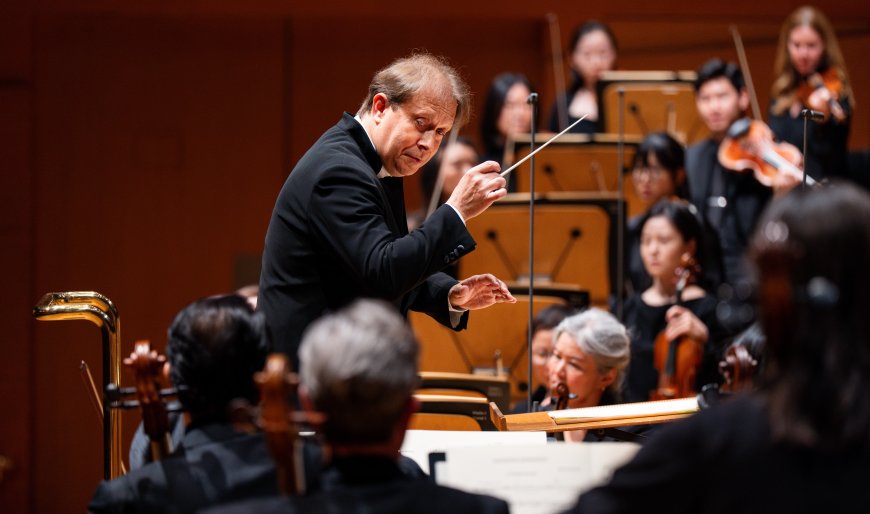
No stranger to Disney Hall, the Los Angeles-based Adolphe has written three major works for the LA Phil. The orchestra has performed her Underneath the Sheen several times, and in 2021, concertmaster Martin Chalifour was the soloist in her concerto Woven Loom, Silver Spindle. Chrysalis completes the trilogy. Cellist Seth Parker Woods, a USC faculty member known for his advocacy of new music, took the solo part. He gave the piece a soulful, technically impeccable, and affectionate reading that injected a needed narrative impulse into what is a somewhat amorphous and static tone poem.
Adolphe has said, “I aim for my music to be accessible, meaning that you don’t need any prior knowledge or history of classical music or contemporary repertoire in order to feel that you can enter its world.” On Friday, she gave a brief introduction from the stage, although this might have been more useful if she had spoken more about her new piece’s musical structure rather than its emotional and visual aspects. In her program note for Chrysalis, she writes, “The orchestra represents the power of nature, the wisdom of the body, the inevitability of change, and the uncertainty of life, while the cello embodies the nascent butterfly, at once destroyed during its metamorphosis and at the brink of a new life.”
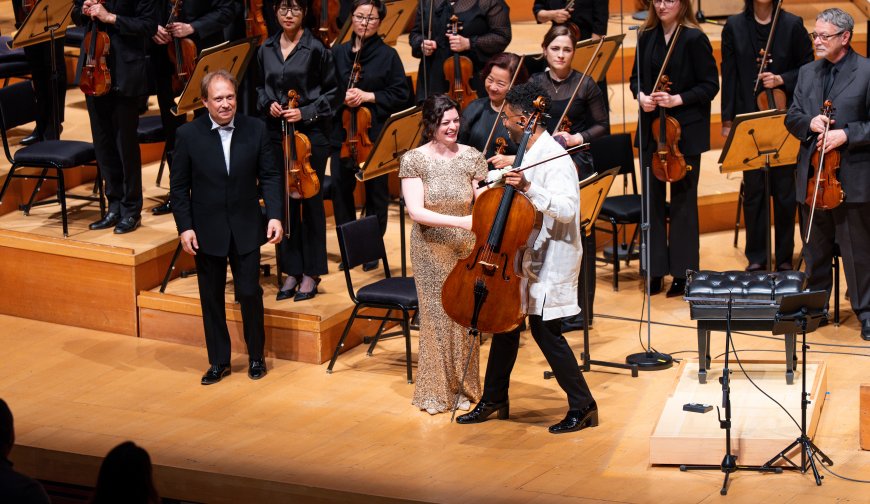
How exactly the music expresses these poetic images was not easy to ascertain. At the outset, the piano sounds a single note that then grows in the clarinet and passes to chimes and delicate figures in the strings. The keyboard rumbles quietly under lyrical phrases reminiscent of the music of George Crumb or Alan Hovhaness. Long pauses perhaps convey the butterfly’s slow emergence from captivity. In the second part, the cello becomes the protagonist, playing ethereal harmonic passages as the orchestra recedes into the background. At the end, the soloist ascends alone, quiet and tentative, the butterfly taking flight. Floating in an ocean of undulating sound, Chrysalis lacks any rhythmic foundation and stays well within the bounds of conventional tonality. Though not cutting-edge, it is attractive and well crafted and received a warm reception from the less-than-full house.
Rhythm and dance reigned in the concert’s second half, devoted to Ravel, another master painter in sound. Morlot took a slow tempo in the Pavane, which can sag without a definite beat (it is a dance after all), and the horn entrances were a bit rough.
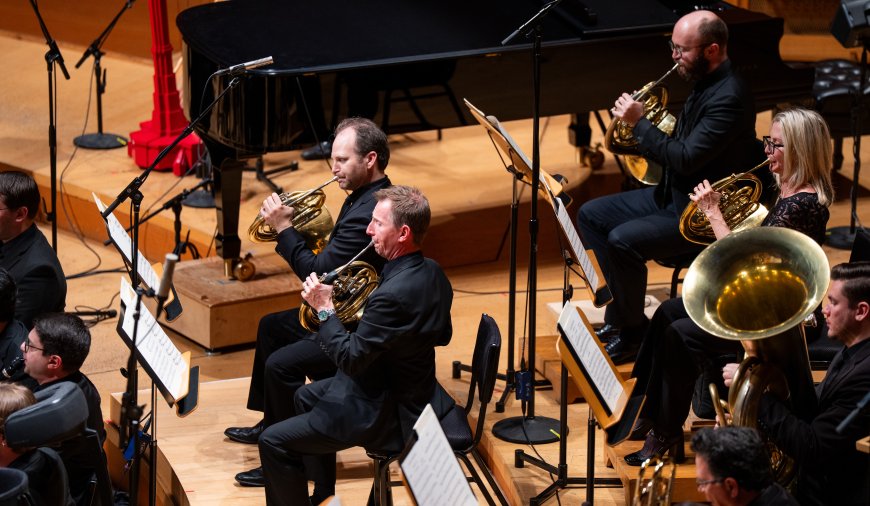
In the Rapsodie, the fine soloists — on English horn, clarinet, and violin — more than rose to the occasion. The opening repeated ostinato figure immediately brought to mind similar passages from Igor Stravinsky’s Firebird, composed just two years later. Here and in Boléro, the orchestra could have played with more fire and commitment. The performances never quite ignited the way they can.
Boléro unfolds like a concerto for orchestra, with nearly every instrument getting its moment in the sun. Morlot placed the snare drum in the middle of the ensemble instead of at the back, giving its infectious rat-a-tatting an extra immediacy. By the end, the gentle motif heard at the beginning had emerged from its cocoon and taken full flight.
